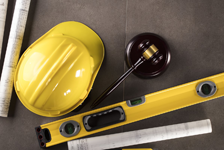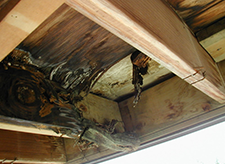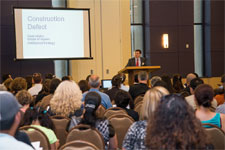 *New Case Law
*New Case Law
In the case of Aldea Dos Vientos v. CalAtlantic Group, Inc., the Second District Court of Appeals overruled the Fourth District’s previous holding in Branches Neighborhood Corp. v. CalAtlantic Group, Inc. The Branches case found that homeowners associations forfeit their rights to pursue construction defect claims unless their members first vote to approve such legal action in accordance with their CC&Rs. The Branches decision was overturned upon the finding that developers cannot use the CC&Rs to veto claims made against them. The Court of Appeals held that such use of the CC&Rs not only violated public policy, but also Senate Bill No. 326, as codified by California Civil Code, section 5986(b).
Factual Summary
A condominium project in Thousand Oaks, Aldea Dos Vientos (“Association”), brought suit against CalAtlantic Group, Inc., the successor to the developer of the Project (“Developer”). The trial court stayed the lawsuit on the parties’ agreement to participate in mediation and then arbitration. When mediation was unsuccessful, the Association subsequently filed a demand for arbitration. After the demand was filed, the Developer cited to the Association’s CC&Rs at Section 7.01B to raise a defense. Section 7.01B required the Association to first obtain a membership vote in excess of fifty-one percent (51%) prior to commencing arbitration. The Association admitted it had not obtained the required vote.
In response, the arbitrator stayed the arbitration to allow the Association to petition the trial court to review this issue of arbitrability. In the meantime, the Association obtained membership approval to continue with arbitration from over ninety-nine percent (99%) of its members. The trial court denied the Association’s motion on the grounds that arbitrability was a matter for the arbitrator to decide. The Developer then filed a motion to dismiss with the arbitrator for the Association’s failure to comply with the CC&Rs at Section 7.01B. The arbitrator summarily dismissed the original demand for arbitration, and the trial court concluded that the arbitration constituted a final determination of the rights of the parties, so judgment was entered in favor of the Developer and against the Association.
Public Policy
In the Aldea Dos Vientos case, the Second District Court of Appeals vacated the lower court’s decision on the basis that the arbitrators exceeded their powers by issuing an award that contravenes an explicit legislative expression of public policy. More specifically, the Court of Appeals found that Section 7.01B of the CC&Rs violates public policy because it gives the Developer the unilateral power to bar an action against itself even though the Legislature clearly intended for housing to be free of substantial construction defects.
Furthermore, the Court of Appeals held that Section 7.01B of the CC&Rs, and any similar provision, is not just unreasonable but unconscionable. The Court stated, “[i]t gives the Developer veto power over the Association’s claims in spite of the members’ vote to proceed with the arbitration.” In sum, such a provision amounts to a trap for the unwary set by the Developer to bar claims against it. For these very reasons, the Second District Court of Appeals declined to follow its sister court’s ruling in Branches.
Senate Bill 326
The Court of Appeals also acknowledged that the Legislature has already found provisions, like Section 7.01B, to be unconscionable. Senate Bill 326 was enacted on August 30, 2019 and took effect on January 1, 2020. The bill added Civil Code, section 5986, subdivision (b) to the Davis-Stirling Act, which prohibits an association’s CC&Rs from limiting a Board’s authority to initiate legal proceedings against its Developer. The Civil Code applies retroactively to any CC&Rs with such limiting language.
The Second District Court of Appeals reversed the judgment in Aldea Dos Vientos on the additional grounds that the arbitrator’s decision to dismiss the original demand for arbitration was not on the merits, nor was the trial court’s judgment final. Furthermore, the arbitrator’s decision expressly stated that it did not directly impact the Association’s second demand for arbitration. Therefore, the Court of Appeals held that the arbitrator’s decision could not have resulted in a final judgment against the Association in the Aldea Dos Vientos case.
| The Aldea Dos Vientos ruling is beneficial for homeowners associations across the state because it preserves their rights to bring construction defect lawsuits against developers regardless of language in the CC&Rs requiring prior membership approval. In any event, homeowners associations should always seek legal advice from attorneys that specialize in HOA law before commencing construction defect lawsuits to ensure their compliance with both state law and their governing documents. |
-Blog post authored by TLG Attorney, Sarah A. Kyriakedes, Esq.
 HOA Lawyer Blog
HOA Lawyer Blog


 *New Legislation
*New Legislation *Unpublished Opinion
*Unpublished Opinion It is well settled that an association’s CC&Rs (“Declaration”) establishes and controls, among other things, a board’s authority to govern an association provided that the CC&Rs do not conflict with California law and regulations (i.e.,
It is well settled that an association’s CC&Rs (“Declaration”) establishes and controls, among other things, a board’s authority to govern an association provided that the CC&Rs do not conflict with California law and regulations (i.e., 

 Our
Our 
 *New Resource
*New Resource